Speakers
- Keynote
- Plenary Speakers
- Conference Dinner Speaker
- Panel Participants
- Breakout Session Contributors
- Step Up For Women
Keynote Speaker
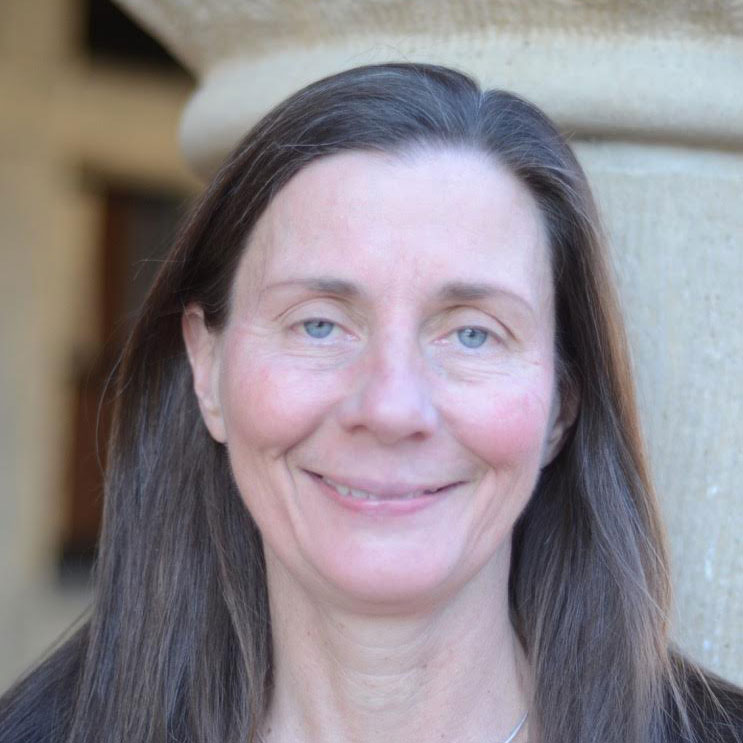
Patricia Burchat
Stanford University
APS CUWiP Keynote Speaker
Patricia Burchat is the Gabilan Professor in the Physics Department at Stanford University.
Her research focuses on studies of the Universe at both the smallest and the largest scales, to probe two questions: What is the Universe made of? What are the laws of physics that govern the constituents of the Universe? She has held a number of leadership positions in experiments at accelerators that probe the elementary particles and the fundamental interactions. She is now part of a large international team of scientists preparing for analysis of data from the Large Synoptic Survey Telescope, which will provide the most extensive census of the Universe to date. She and her collaborators will use these data to investigate the nature of dark matter and dark energy, and the cosmological evolution of the Universe.
Patricia Burchat is a “first-gen” high school graduate. She received her Bachelors degree in Engineering Science at University of Toronto in 1981, and her PhD in Physics from Stanford in 1986. She was a postdoc and faculty member at UC Santa Cruz before returning to Stanford as a faculty member in 1995. At Stanford, she has served as Chair of the Physics Department and has been very active in introducing research-based pedagogy in the teaching of physics. She has received the Dean’s Award for Distinguished Teaching and the Walter J. Gores Award for excellence in teaching, and was elected as Fellow of the American Association for the Advancement of Science and the American Physical Society. Patricia Burchat has played a leading role in the growth of the APS Conferences for Undergraduate Women in Physics.
Plenary Speakers
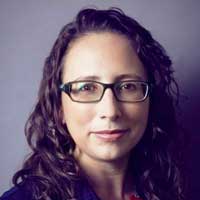
Kelle Cruz
Hunter College, AMNH
Associate Professor, Observational Astronomy
Professor Kelle Cruz is an Associate Professor of Physics and Astronomy at the Hunter College and a Research Associate at the American Museum of Natural History (AMNH). Her research focuses on the observational study of very low mass stars and brown dwarfs. She uses space- and ground- based telescopes and large surveys to identify age indicators in these objects. She has mentored numerous undergraduate women who have continued in academic science, three of whom were awarded NSF graduate research fellowships.
She received both her Bachelors and PhD from the University of Pennsylvania, where she was an NSF Graduate Research Fellow. Prior to joining the Hunter faculty, she was an NSF Astronomy and Astrophysics Postdoctoral Fellow at AMNH and a Spitzer Postdoctoral Fellow at Caltech.
She is passionate about open science practices and resource sharing among scientists. She is the founder and Editor-in-Chief of the AstroBetter blog and wiki and serves on the Coordination Committee of the Astropy Project, the core software suite for Astronomy in the Python programming language.
She is currently serving on the Board of the American Astronomical Society. Prior to being elected to the Board, she served as the Chair of the Committee on Employment from 2010-2017. She also recently started ScienceBetter Consulting, a small business dedicated to serving the needs of the scientific community.
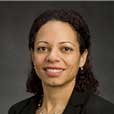
Nadya Mason
University of Illinois at Urbana-Champaign
Professor, Condensed matter
Nadya Mason is a professor of Physics at the University of Illinois at Urbana-Champaign and Director of the Illinois Materials Research Science and Engineering Center. She earned her PhD in physics from Stanford University and engaged in postdoctoral research as a Junior Fellow at Harvard University. A condensed matter experimentalist, Dr. Mason focuses on electron behavior in low-dimensional materials such as nanowires, graphene, and nano-structured superconductors. Her research is relevant to the fundamental physics of small systems, as well as to applications involving nano-scale and quantum electronic elements. In addition to maintaining a rigorous research program and teaching, Dr. Mason works to increase diversity in the physical sciences, embracing opportunities to encourage and mentor aspiring scientists from underrepresented groups and to promote a welcoming climate within the field. Dr. Mason was named a 2008 Emerging Scholar by Diverse Issues in Higher Education magazine, and was a recipient of the 2009 Denise Denton Emerging Leader Award and the 2012 Maria Goeppert Mayer Award of the American Physical Society (APS). She is a General Councillor of the APS, the former Chair of the APS Committee on Minorities, and serves on the Editorial Board of Physical Review B.
Panelists

Catherine Garland
Uncommon Charter High School
Catherine Garland teaches AP Physics 1 and Project Lead the Way Aerospace Engineering at Uncommon Charter High School in Brooklyn, New York.
Uncommon's mission is to close the achievement gap so that 100% of students go "to and through" college. Prior to teaching with Uncommon, Cat was a Physics Professor at Castleton University in Vermont where she taught physics and astronomy to science majors and pre-service elementary teachers. Cat earned her Ph. D. in Astronomy studying star formation in interacting galaxies at the University of Hawaiʻi at Manoa. Cat is currently a Math for America Early Career Teach

Jehanne Gillo
Department of Energy
Dr. Gillo is the Director of the Facilities and Project Management Division, Office of Nuclear Physics, at the US Department of Energy.
Dr. Jehanne Gillo has worked at the Department of Energy since February 2000. Dr. Gillo first joined the Office of Science’s Office of High Energy and Nuclear Physics, Division of Nuclear Physics at the U.S. Department of Energy as Program Manager for Facilities & Instrumentation. Dr. Gillo took her present position as the Director of the Facilities and Project Management Division, Office of Nuclear Physics, Department of Energy in October 2005, where she is responsible for the operations of the nuclear physics scientific user facilities, large construction projects, fabrication of scientific instrumentation, accelerator research and development, and the nuclear physics SBIR/STTR program. Since 2008, she also assumed responsibility as the deputy to the Associate Director of the Office of Nuclear Physics. In addition, she is Director of the DOE Isotope Program since 2009. She received the Secretary of Energy Excellence Award in October 2012 for her management of the DOE Isotope Program. Dr. Gillo serves on several White House committees and Interagency Groups, including as Chair of the He-3 Interagency Working Group that reports to the White House National Security Staff. She received the 2016 Achievement Award from the Secretary of the Department of Energy for her efforts as part of the Joint Comprehensive Plan of Action (JCPOA) Support Team. Jehanne Gillo was awarded the 2016 Presidential Rank of Meritorious Executive Award for her accomplishments as the Director of the Nuclear Physics Facilities and Project Management Division.
Dr. Gillo obtained her Bachelor of Science Degree from Juniata College in 1985. As a graduate student at Texas A&M, Dr. Gillo majored in Nuclear Chemistry with an emphasis in relativistic heavy ion physics research and received her Ph.D. Degree in 1990. She held the position of Physicist at Los Alamos National Laboratory (LANL) from 1990-2000. She has worked as a Guest Scientist at the Niels Bohr Institute in Denmark, and has conducted nuclear physics experiments at CERN, RHIC, LANL, and Texas A&M University.
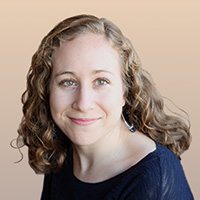
Clara Moskowitz
Senior Editor, Scientific American
Clara Moskowitz is a senior editor at Scientific American magazine, where she covers astronomy and physics.
Clara Moskowitz is a senior editor at Scientific American magazine, where she covers astronomy and physics. A space geek from way back, she’s been to Space Camp, attended about a dozen rocket launches, and graduated from suborbital spaceflight training. She has a bachelor's degree in astronomy and physics from Wesleyan University and a graduate degree in science journalism from the University of California, Santa Cruz. Prior to joining Scientific American, she worked for Space.com, Wired, Discover magazine and the American Museum of Natural History.
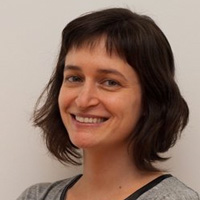
Rachel Rosen
Assistant Professor, Columbia University
Rachel A. Rosen is an assistant professor of theoretical physics at Columbia University. Her research focuses on gravity and quantum field theory.
Rachel A. Rosen is an assistant professor of theoretical physics at Columbia University. Her research focuses on gravity and quantum field theory. In particular, she is interested in using the insights of particles physics to improve our understanding of gravity. She received her PhD from NYU in 2009 and has held postdoctoral positions at Stockholm University and Columbia University. She is committed to science communication and has participated in the World Science Festival as a panelist for a salon entitled ``Coming to Grips with Gravity," among other public talks. In the summer of 2015 and 2017 she co-organized the Sitka Sound Science Workshop for Early Career Theoretical Physicists in Sitka, Alaska.
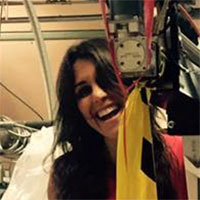
Theanne Schiros
Assistant Professor, Fashion Institute of Technology
Theanne Schiros, PhD, is Assistant Professor at FIT, where she teaches physics, chemistry and sustainability courses.
She is the FIT coordinator and faculty lead for the international Biodesign Challenge, guiding students on how to rethink textiles through technology, biology and sustainable design. She is also an Adjunct Research Scientist at Columbia University in the Materials Research Science and Engineering Center (MRSEC), as well as the diversity liaison, working collaboratively across the center to explore 2-D materials for next generation, post-silicon electronic devices, and catalysts for clean energy applications. Schiros is engaged in international sustainable development with organizations such as Engineers without Borders (Haiti), the Finca Morpho Permaculture collective (Costa Rica) and the “There is No Limit Foundation” (Guinea). She has published her work in numerous peer-reviewed journals and has been the recipient of multiple grants to support this work, including the National Geographic Chasing Genius Award (Sustainable Planet) for development of a kelp-based bioyarn for textile applications, and was the United Nations ECOWAS Fellow for Sustainable Energy Engineering, the NYSERDA Fellow, and an EFRC Fellow for next generation photovoltaic devices at Columbia University in the area of nanomaterials science and engineering.
Conference Dinner Speaker

Myriam Sarachik
Dist. Professor, City College of New York
Prof Sarachik is an experimental condensed matter physicist.
Myriam Sarachik’s experiments at low temperatures have covered many topics, including: superconductivity, disordered metallic alloys, metal- insulator transitions in doped semiconductors, hopping transport in solids, properties of strongly interacting electrons in two dimensions, and spin dynamics in molecular magnets. She received the 1995 New York City Mayor’s Award for Excellence in Science and Technology, a 2004 Sloan Public Service Award, the 2005 Buckley Prize in Condensed Matter Physics, was named the 2005 LOREAL-UNESCO for Women in Science North American Laureate and received an honorary degree from Amherst College in 2006. She is a member of the National Academy of Sciences, a Fellow of the American Academy of Arts and Sciences, a Fellow of the American Physical Society, a Fellow of the New York Academy of Sciences, and a Fellow of the American Association for the Advancement of Science. She served as President of the American Physical Society in 2003.
Undergraduate Research
Faculty who run undergraduate research programs at Columbia, City College, and Barnard are here to tell you what they look for in students and how to succeed in a lab. Undergraduates currently working in labs will also be on the panel to share their experiences and tips.
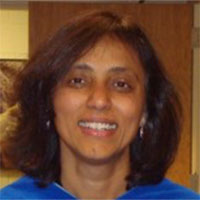
Reshmi Mukherjee
Professor, Barnard College
Dr. Reshmi Mukherjee is the Helen Goodhart Altschul Professor of Physics and Astronomy at Barnard College
Dr. Reshmi Mukherjee joined the Barnard faculty in 1997, and is now the Helen Goodhart Altschul Professor of Physics and Astronomy. Her teaching assignments include such courses as "Introductory Physics (Mechanics)," "Experimental Methods in Physics, " "Supervised Individual Research," and "Quantum Physics."
Professor Mukherjee's research interests are in high-energy astrophysics and astroparticle physics. She uses ground-based atmospheric Cherenkov telescopes to study galactic and extragalactic high-energy gamma-ray sources.
One of her current projects is VERITAS (Very Energetic Radiation Imaging Telescope Array System), located in southern Arizona. VERITAS is a major ground-based gamma-ray observatory that enables the study of extragalactic and galactic high energy gamma-ray sources. The VERITAS collaboration uses an array of mirrors at night to detect the quick flashes of blue Cherenkov light that result from gamma-ray air showers.
Professor Mukherjee is also involved with the study of active galaxies, thought to be powered by super-massive black holes at their centers, and unidentified high-energy gamma-ray sources.

Marylin Gunner
Professor, The City College of New York
Dr. Marylin Gunner is a physics professor at the City College of New York. She received her B.A.
Dr. Marylin Gunner is a physics professor at the City College of New York. She received her B.A. from the State University of New York (Binghamton) and her Ph.D. from the University of Pennsylvania. Her research interests include electron transfer and proton transfer reactions and evaluating when and where electrostatic interactions are important in proteins. To do this she uses time-resolved optical spectroscopy to study photosynthetic reaction centers. The aim is to characterize the energy landscape (reaction barriers and thermodynamics) of electron transfer reactions that are coupled to protein and proton motions. Her work also includes calculating pKs and electrochemical midpoints in proteins to see how a protein's form yields its function, and developing MCCE which combines continuum electrostatics & molecular mechanics to study coupled conformation & ionization state changes in proteins.
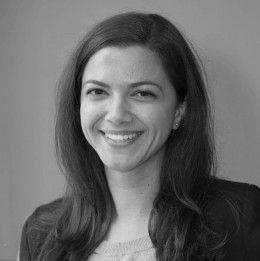
Georgia Karagiorgi
Experimental Particle Physicist, Columbia University
Dr. Georgia Karagiorgi is an experimental particle physicist at Columbia University.
Dr. Georgia Karagiorgi is an experimental particle physicist at Columbia University. As a leading member of the Columbia Neutrino Group, she is involved in operations and data analysis for the MicroBooNE experiment at Fermi US National Lab, and in the design and construction of the future SBND and DUNE experiments.
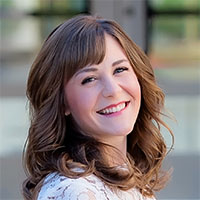
Briley Lewis
Undergraduate, Columbia Astronomy
Exoplanet detection and characterization, solar system science
Briley Lewis is a senior undergraduate student at Columbia University studying astrophysics. Under Dr. Rebecca Oppenheimer at the American Museum of Natural History, she works on Project 1640, a high-contrast imaging survey to directly image exoplanets and other substellar objects. Additionally, she participated in a summer program with Space Telescope Science Institute in Baltimore, MD; for this project, she works with data from the New Horizons flyby of Pluto to investigate the effects of topography on the movement of ices on Pluto's surface. In addition to research, Briley is involved with Columbia's Undergraduate Astronomy Club, BlueShift, which aims to promote a community between undergraduate students and support their involvement in research and departmental activities. She attended her first CUWiP her sophomore year of undergrad, and is very excited to be helping with this year's conference.

Abigail Murphy
Undergraduate, The City College of New York
Abigail Murphy is a Standard Physics undergraduate senior at The City College of New York.
Abigail Murphy is a Standard Physics undergraduate senior at The City College of New York. In her time at CCNY, Abigail has been involved in two internship programs and completed one year of laboratory-based research. At the present, Abigail interns for a remote sensing research group. She is president of the Women in Physics club, and is involved in several programs as an undergraduate mentor. Abigail hopes to continue her remote sensing work in industry post graduation.
Underrepresented in STEM
Come hear from people across a wide spectrum of identities about their experiences in academia, programs and groups designed to support underrepresented groups, and more!
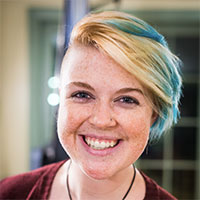
Mel Abler
PhD Student, Columbia University
Planetary magnetospheres and ionospheres
Mel Abler is a fourth year PhD student at Columbia University focusing on experimental studies of turbulence and nonlinear wave coupling in dipole plasmas, particularly as these studies relate to planetary magnetospheres and ionospheres. They graduated from the University of Wisconsin – Madison in 2014 with degrees in Engineering Physics, Astronomy-Physics, and Applied Mathematics. Both inside and outside the lab, Mel advocates for increased inclusion in physics. They co-founded student chapters of oSTEM (out in Science, Technology, Engineering, and Mathematics) at both Wisconsin and Columbia, recently brought the You Are Welcome Here campaign to Columbia’s Morningside campus, and serves on the local organizing committee for the 2018 CUWiP NYC site. In their “free time” they coach and compete with Row New York, and organization focused on bringing the sport of rowing to everyone regardless of income or ability status.

Kwame Osei-Sarfo
Director, Bridge to Ph.D. Program, Columbia University
Dr. Kwame Osei-Sarfo currently is the Director the Bridge to Ph.D. Program in the Natural Sciences at Columbia University.
Dr. Kwame Osei-Sarfo currently is the Director the Bridge to Ph.D. Program in the Natural Sciences at Columbia University. As Director, he promotes the participation of underrepresented groups in doctoral programs by providing research, mentoring, and support experiences. Prior to this role, Dr. Osei-Sarfo was a biomedical researcher, who studied multiple subfields in oncology at New York University (NYU) School of Medicine, Weill Cornell Medical College, and Innovimmune Biotherapeutics. Also, Dr. Osei-Sarfo has served an educator to students of various backgrounds at John Jay College for Criminal Justice and New York City College of Technology. Finally, he has volunteered with many organizations that endorse interest in STEM fields for “nontraditional” high school and college students. Dr. Osei-Sarfo understands the need and the importance of improving and fostering support systems to the next wave of underrepresented STEM scholars.
Dr. Osei-Sarfo received his B.S. in Biology from Xavier University of Louisiana. He earned his Ph.D. in Molecular Oncology and Immunology, by investigating pathways involved in the initiation and development of lymphoma, from NYU Graduate School of Arts and Sciences.

Kassidy Lundy
Bridge to the PhD Scholar, Columbia University
Biophysics
Kassidy Lundy was born in Queens Village, New York, and graduated from Syracuse University with a B.A. in biophysics in 2016. While at Syracuse, Kassidy started worked with Lisa Manning in the Department of Physics to simulate the trajectory of Kupffer’s Vesicle organ in Zebra fish embryos using the principles of the Self-Propelled Particle model. Now, as a Bridge to the PhD scholar at Columbia, Kassidy characterizes CRISPR/Cas9 enzyme kinetics via Atomic Force Microscopy. Following these experiences in computational and experimental biophysics, Kassidy is in the process of applying to graduate school programs. Kassidy maintains her desire to volunteer to work with children from members of underrepresented groups, including her own and constantly pushes to encourage holistic and personal growth in professional spaces.
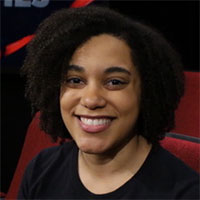
Moiya McTier
Graduate Student, Columbia Astronomy
Galaxy evolution, exoplanets, and Milky Way structure
Moiya McTier is a second year graduate student studying astronomy at Columbia University. She first became interested in astrophysics when she stumbled into an introductory astronomy class as a sophomore at Harvard College. Since then, Moiya has researched several different astronomical phenomena, including galaxy evolution, exoplanets, and Milky Way structure. She splits her time between doing science, talking about it in front of people, and working to make sure marginalized folks can thrive in STEM.
Graduate School and Fellowship Applications
Hear from a panel of faculty and graduate students who have served on admissions committees, recently applied to graduate school, and/or won fellowships. The session will open with a brief introduction by each panelists followed by a moderated panel discussion. In the second half, the panel will open for questions about applying to graduate school, being competitive in fellowship applications, and more.
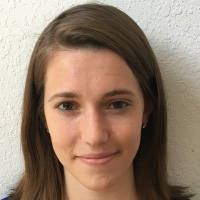
Susan Clark
NASA Hubble Postdoctoral Fellow, Institute for Advanced Study
Susan Clark is a NASA Hubble Postdoctoral Fellow at the Institute for Advanced Study in Princeton, New Jersey.
She studies cosmic magnetism and the interstellar medium-- the stuff between the stars in a galaxy. Susan received her B.S. in Physics from the University of North Carolina at Chapel Hill, and her Ph.D. in Astronomy from Columbia University.
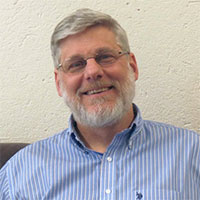
Brian Cole
Professor, Columbia University
Brian Cole studies high-energy nuclear physics.
I am a full professor of physics at Columbia University and have been on the physics department faculty since 1994. My research is in the field of high-energy nuclear physics and is currently focused on experimental studies of ultra-relativistic heavy-ion collisions at the Large Hadron Collider.

Elizabeth Culbertson
Graduate Student, Columbia University
Elizabeth is a second-year PhD student at Columbia University in the department of Applied Physics and Applied Mathematics and a Presidential Fellow in the School of Engineering and Applied Science.
Elizabeth is a second-year PhD student at Columbia University in the department of Applied Physics and Applied Mathematics and a Presidential Fellow in the School of Engineering and Applied Science. Under Prof. Simon Billinge, she works in applying the pair distribution function (PDF) method to the analysis of x-ray powder diffraction data. In general, the group's focus is on leveraging this technique to do structure determination for aperiodic materials - i.e. nanoparticles, nanocrystalline materials, nanoporous materials, and amorphous materials. In particular, Elizabeth has focused recently on the application of this technique to weakly scattering materials; for example, organic materials and liquids. Elizabeth grew up in Northern Virginia and earned her bachelors degree from Stanford University in 2016, studying engineering physics and computer science.
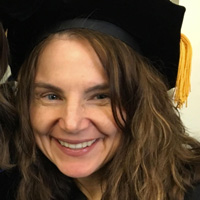
Mary Putman,
Professor of Astronomy, Columbia University
Mary Putman has been a professor in the Astronomy Department at Columbia since 2008.
Mary Putman has been a professor in the Astronomy Department at Columbia since 2008. She was previously on the faculty at the University of Michigan and a Hubble Postdoctoral Fellow at the University of Colorado. Putman has published over 100 refereed publications with over 5,000 citations and is frequently invited to give review talks and write review articles in her field of gaseous galaxy evolution. One of her favorite parts of her job is completing research with the impressive Columbia undergraduate and graduate students.
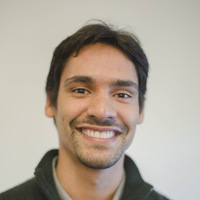
Deivid Ribeiro
PhD Student, Columbia University
Deivid is pursuing a PhD in physics at Columbia University.
Deivid Ribeiro grew up in Cape Cod, Massachusetts, and attended the University of Massachusetts at Dartmouth before transferring to Brown University to complete a B.S. in physics. After graduation, he was accepted into the Bridge to Phd Program at Columbia University, where he worked as a research assistant in Brian Humensky’s laboratory. He is now a 2nd year PhD student in Columbia University Physics department. Deivid has worked on the optical alignment system of a prototype gamma-ray telescope, featuring the novel Schwarzschild-Couder optical design, which is a candidate instrument for the Cherenkov Telescope Array Observatory. Additionally, he is currently working on analysis techniques with VERITAS, the current IACT gamma ray observatory in Arizona.
Mental Wellness
What to do when your brain lies to you? In this workshop we present a research based understanding of the causes of mental stress and how to deal with them. We talk about stereotype-threat, imposter syndrome, self-care, and share our personal stories about mental health in academia and beyond. You will learn about resources and do activities that allow you to prioritize and take care of your mental health.
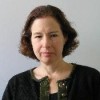
Dr. Anne Goldfield
Associate Director Counseling and Psychological Services Outreach, Columbia University
Anne Goldfield joined Columbia Health in 1994. Prior to Columbia, Anne was a clinical psychologist at North Central Bronx Hospital and the Bronx Psychiatric Center.
Anne Goldfield joined Columbia Health in 1994. Prior to Columbia, Anne was a clinical psychologist at North Central Bronx Hospital and the Bronx Psychiatric Center. She attended the CUNY City College of New York, the University of San Francisco. She was also part of the graduate faculty at the New School for Social Research. Anne's professional interests include individual and couples counseling, the treatment of students with alcohol and other drug concerns, and developmental issues of early adulthood.
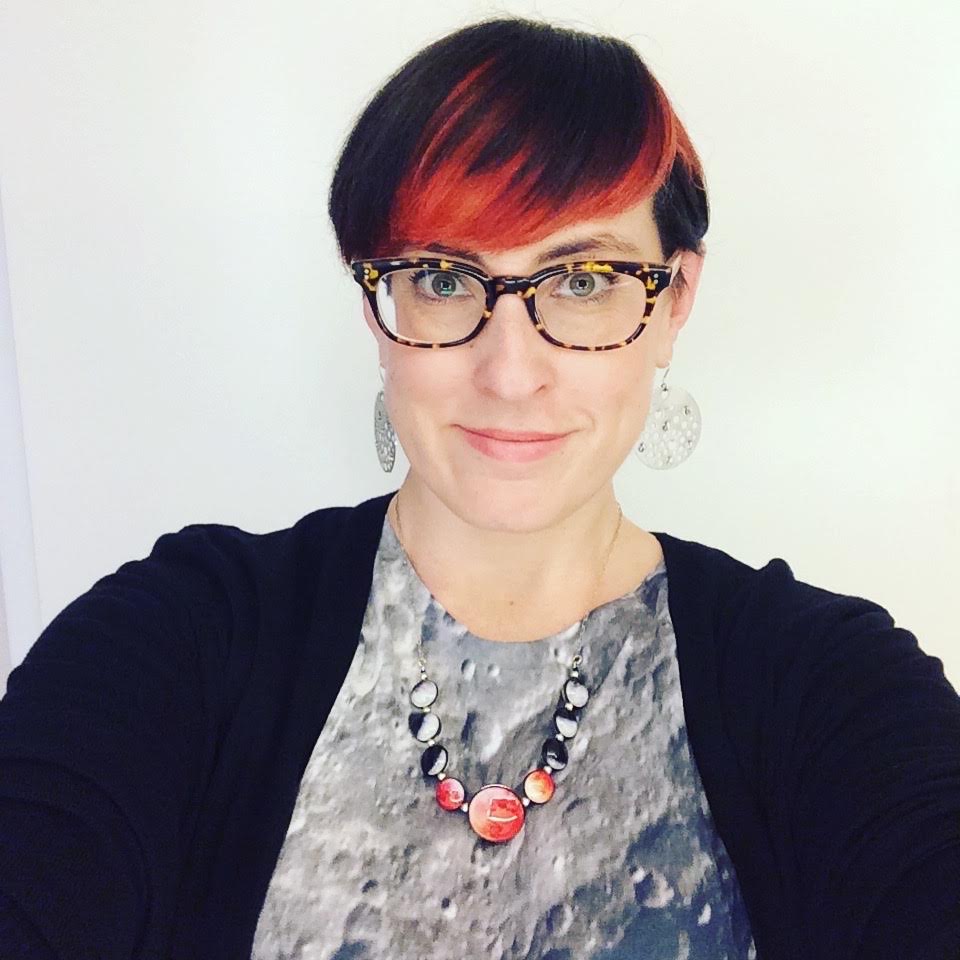
Summer Ash
Director of Outreach for Columbia University's Department of Astronomy
Summer Ash is the Director of Outreach for Columbia University's Department of Astronomy.
Summer Ash is the Director of Outreach for Columbia University's Department of Astronomy. Having been formally trained in both rocket scientist and radio astronomy, she’s now harnessing her powers for science communication and to advocate for equity and inclusion in STEM. She values the power of the scientific method, the history of science and the necessity of skeptical inquiry.
Her written work has appeared in The Atlantic, Smithsonian, Scientific American, Slate, Nautilus Magazine, and she regularly writes for Syfy.com. She hosts a series for science videos for NBC Mach and CUNY’s Macaulay Honors College. She recently appeared on The Nerdist and Star Talk (TV & podcast) and is a Star Talk All-Star. Summer is also a consultant for the Science & Entertainment Exchange arm of the National Academies of Science. She tweets as @Summer_Ash and as one-half of @Startorialist.
Careers Tangential to Physics
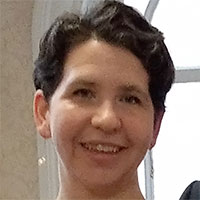
Sarah Campbell
Amazon
Sarah Campbell is a Data Scientist at Amazon working on Alexa, Amazon’s voice operated personal assistant.
In her current role, she uses machine learning algorithms to create statistical models for natural language understanding, what is considered an AI ‘hard’ problem. Prior to working at Amazon, Sarah was a post-doctoral researcher at Columbia University working with Bill Zajc and Brain Cole on relativistic heavy ion research, specifically sPHENIX a new detector planned for the Relativistic Heavy Ion Collider at Brookhaven National Laboratory. In 2002, Sarah graduated with a BA in physics and mathematics from Grinnell College in Grinnell, IA and in 2011 she graduated with a PhD in physics from Stony Brook University in Stony Brook, NY. Sarah currently lives in the Boston area with her husband, two kids and a dog.
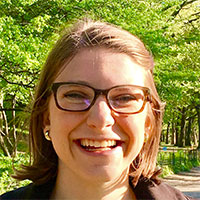
Eliana Ward-Lev
McKinsey & Company
Eliana Ward-Lev is a first year Business Analyst at McKinsey & Company.
Eliana Ward-Lev is a first year Business Analyst at McKinsey & Company. In this role she helps businesses, non-profits, and government organizations solve complex problems. Eliana graduated from Barnard College in 2017 with degrees in Physics and Computer Science. When she’s not working she volunteers as an EMT for the Central Park Medical Unit and sings in the Barnard-Columbia Chorus.
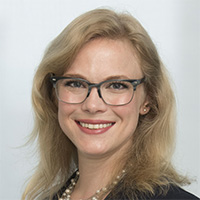
Stephanie Wortel-London
Director of Education, New York Academy of Sciences
Stephanie Wortel-London acts as the Director of Education at the New York Academy of Sciences, overseeing the Academy’s Science Alliance and Virtual Mentoring Programs.
Prior to assuming this role, Stephanie served as Program Manager for the Afterschool STEM Mentoring Program in New York City and Newark, NJ for five years. Stephanie graduated magna cum laude in Astronomy-Physics at Colgate University, where she received the 1819 Award. After moving to New York City, she worked in research projects through the Astrophysics Department of the American Museum of Natural History (AMNH) and completed the New York City Teaching Fellowship with an MSEd in Science Education from Lehman College. She is a New York State Certified Earth Science teacher. Prior to joining the Academy, Stephanie taught Earth Science in a South Bronx public school and wrote curricula for Youth Initiatives and the Space Show at AMNH.
Areas of research include quasar optical variability, stellar evolution, astrometry of brown dwarfs, and the development of science identity in groups historically under-represented in STEM through informal learning experiences. She is preparing to defend her PhD dissertation in Science Education Research at Stony Brook University's Institute for STEM Education, and serves as an Adjunct Professor for the Space Systems course in the AMNH Master of Arts in Teaching Residency graduate program. She also serves on the Associate Board of the Red Hook Initiative in Brooklyn.
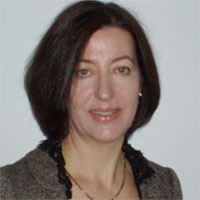
Rodanthy Tzani
New York Life Insurance Company
Rodanthy Tzani is a Vice President and Head of Model Risk in the New York Life Insurance Company.
From 2009 to 2017 she was a Supervising Examiner and Risk Analytics Manager in the Model Risk Department of the Supervision Group of the Federal Reserve Bank of New York. During her tenure at the Fed, Rodanthy was a team leader and senior advisor in supervising large domestic and foreign banks in model risk. She has led numerous examinations evaluating models used for measuring risk and approaches used for calculating risk by large banks. Rodanthy also led the supervision of model risk across the Systemically Important Insurance Companies and established supervising standards of their model risk framework. Before joining the Fed, Rodanthy was the Head of the Structured Finance Risk Management at ACA Capital, where she oversaw the restructuring and winding down of the company during the 2008 crisis. Prior to that she was a Vice President with the Derivatives Group of Moody’s Investors Service. Rodanthy holds a Ph.D. in Theoretical Physics from the City College of CUNY and has spent a number of years in academia conducting research in theoretical physics in various universities in Europe and USA before moving to finance in 2001. She has published a number of papers in refereed journals in both physics and finance. Rodanthy is a native of Greece and lives with her husband, Alexios, and son, Jason, in New York City.

Greg Kandor
Bank of America Merrill Lynch
Greg Kaldor is a Managing Director in the Macro Equity & Global Alpha Group (MEGA US) based in New York.
In this position, Greg is responsible for generating robust and executable trade ideas through cross referencing our macro and equity research with positioning and flow data.
Greg joined BofA Merrill Lynch in Sydney, Australia and had a range of leadership roles across fixed income and currencies; trading and structuring FX & interest rate products and now equities. After transferring from Sydney to New York, Greg was as an FX option trader and later worked in FX derivative structuring.
Upon transferring to London, Greg was Global Head of FX derivative structuring and then was responsible for running the firm’s institutional FX sales business until 2008. Greg later joined a London- based hedge fund implementing systematic trading strategies for FX markets.
Upon returning to New York, Greg held the position of Managing Director in FX Institutional Sales where he covered senior macro Portfolio Managers as well as writing strategically on alpha opportunities.
In 2015, Greg moved from Fixed Income and Currencies to the BAML Global Equity franchise.
Greg holds a Bachelor of Commerce in Accounting and Finance from the University of New South Wales in Sydney, Australia.
Step Up for Women
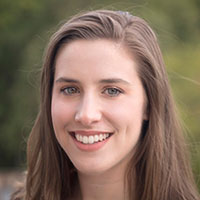
Miranda Bard
APS
Miranda Bard is the Women and Education Programs Coordinator at the American Physical Society.
Miranda Bard is the Women and Education Programs Coordinator at the American Physical Society. She manages the National Organizing Committee of the APS Conference for Undergraduate Women in Physics, as well as the application and registration lifecycle. She is also responsible for Professional Skills Development Workshops and programs of the Committee on the Status of Women in Physics and the Committee on Education. With a degree in Communication and Sociology from the University of California, Davis, Miranda has been working with nonprofits for the past 2 years, and has a passion for increasing access to education and uplifting diverse voices.

Katiuscia Cassemiro
Associate Editor, Physical Review A
Katiuscia received her Ph.D. from the University of São Paulo, Brazil. She did her postdoctoral research at the Max Planck Institute for the Science of Light (Germany) as a Humboldt Postdoctoral Fellow, and at the European Laboratory for Non-linear Spectroscopy (Italy). She held the position of assistant professor at the Federal University of Pernambuco (Brazil) before joining Physical Review A as in-house Editor in 2015. Her expertise is in quantum information and quantum optics.

Catherine Garland
Uncommon Charter High School
Catherine Garland teaches AP Physics 1 and Project Lead the Way Aerospace Engineering at Uncommon Charter High School in Brooklyn, New York.
Uncommon's mission is to close the achievement gap so that 100% of students go "to and through" college. Prior to teaching with Uncommon, Cat was a Physics Professor at Castleton University in Vermont where she taught physics and astronomy to science majors and pre-service elementary teachers. Cat earned her Ph. D. in Astronomy studying star formation in interacting galaxies at the University of Hawaiʻi at Manoa. Cat is currently a Math for America Early Career Teach
